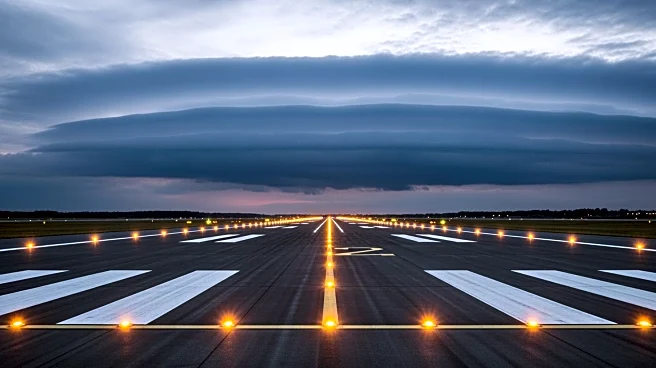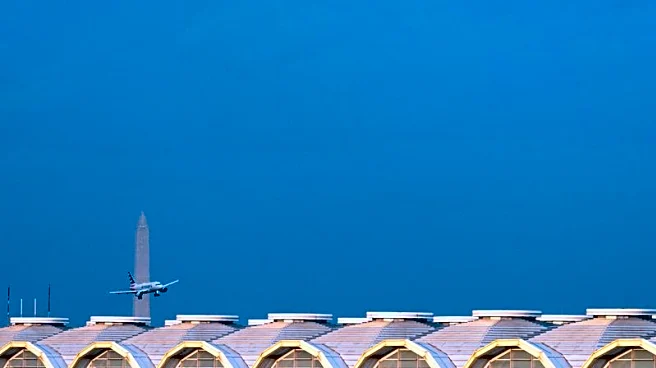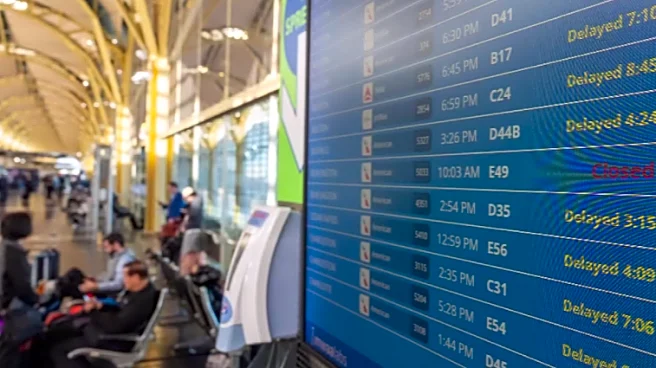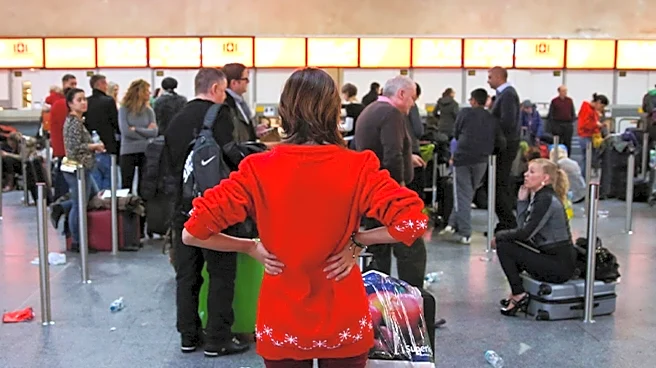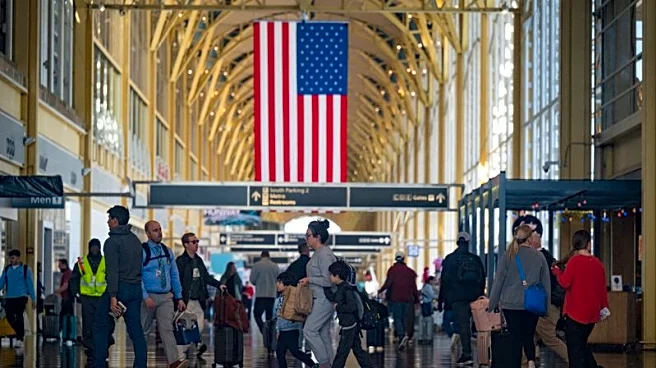What's Happening?
The Federal Aviation Administration (FAA) is gearing up for what is expected to be the busiest Thanksgiving travel period in 15 years. Following the recent government shutdown, which ended on November
12, the FAA has lifted flight restrictions and is preparing for over 360,000 flights scheduled between Monday and next Tuesday. Transportation Secretary Sean Duffy assured that air traffic controller staffing levels have stabilized, allowing passengers to 'fly with confidence.' The Transportation Security Administration anticipates screening more than 17.8 million people at airports, with a total of 31 million expected to fly over the holiday weekend. Weather forecasts predict rain in the Pacific Northwest and eastern U.S., potentially impacting airports in major cities like Chicago, New York, and Washington, D.C. Meanwhile, AAA projects a record 73 million people will travel by car, with Tuesday, Wednesday, and Sunday afternoons being the busiest times.
Why It's Important?
The anticipated surge in Thanksgiving travel highlights the resilience and recovery of the aviation industry following the government shutdown. The FAA's ability to stabilize staffing and manage increased flight schedules is crucial for maintaining public confidence in air travel. The record number of travelers, both by air and road, underscores the importance of efficient transportation infrastructure and services. This period serves as a critical test for the FAA and TSA in handling large volumes of passengers while ensuring safety and minimizing delays. The impact of weather conditions on travel plans further emphasizes the need for robust contingency measures and communication strategies to manage potential disruptions.
What's Next?
As the holiday travel period progresses, the FAA and TSA will continue to monitor staffing levels and flight schedules to ensure smooth operations. Travelers are advised to stay informed about weather conditions and potential delays, particularly in regions forecasted to experience rain. The transportation agencies may implement additional measures to manage traffic flow and enhance passenger experience. Post-Thanksgiving, the FAA will likely review the effectiveness of its strategies and make adjustments for future peak travel periods. The outcome of this travel surge could influence policy decisions regarding staffing and resource allocation in the aviation sector.
